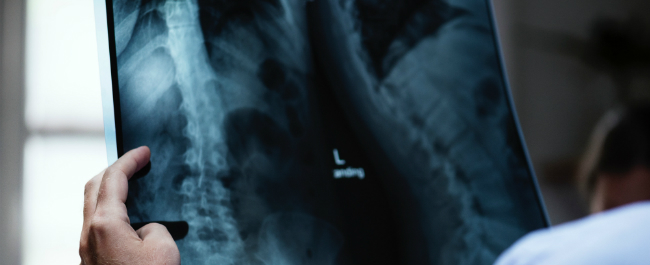Learning what longer life means for kids with HIV in Africa
Antiretroviral therapy greatly improves survival rates for HIV-positive people - but with this success come pressing new challenges.
The challenge
Worldwide, 1.8 million children live with HIV. A staggering 90% of those are in sub-Saharan Africa. The positive effects of antiretroviral therapy - ART - mean far greater numbers of children now have a future that extends into adulthood. Up to half of those who acquired HIV through birth, however, face the prospect of growth failure.
Little is known about the impact of HIV on the growing skeleton, especially in low-income settings. Adolescence, though, is a critical phase, when a child attains most of their final, adult bone mass. It plays a large part in determining the risks of osteoporosis and fracture in adulthood; fractures not only lead to pain and disability, but can also reduce employment prospects and income.
What we’re doing
Alongside academic and medical partners in Africa and beyond, we’re using our skills to improve understanding of HIV’s influence on childhood skeletal development.
Our recent systematic review, for example, found that the impact of vitamin D supplements on the musculoskeletal health of HIV-positive young people hasn’t been properly assessed in low-to-middle income countries. We’ve also shown that physical and cognitive impairments are common among children with HIV and that these impairments are linked to social and educational difficulties.
There’s still lots more to do. We’re aiming to establish exactly how common low bone mass is among HIV-infected children and what the resultant risks are. We’re comparing the relationships between bone and muscle in adolescents with and without HIV. And we’ll also be investigating the frequency of specific adult fracture types in Zimbabwe.
How it helps
As the good news story of longer life expectancy makes it an increasingly important subject, we hope our co-produced findings will give a clearer picture of HIV’s impact on bone and muscle development.
Armed with real evidence across a range of indicators, we’ll be much better placed to work out when, where and how we can intervene to keep improving the outcomes for young people living with HIV.
Related research centres
Partner organisations
- University of Southampton
- Biomedical Research and Training Institute in Harare, Zimbabwe
- University of Zimbabwe
- London School of Hygiene and Tropical Medicine
Funders
Global challenge research
We're tackling the world's biggest problems through collaboration and innovation.
